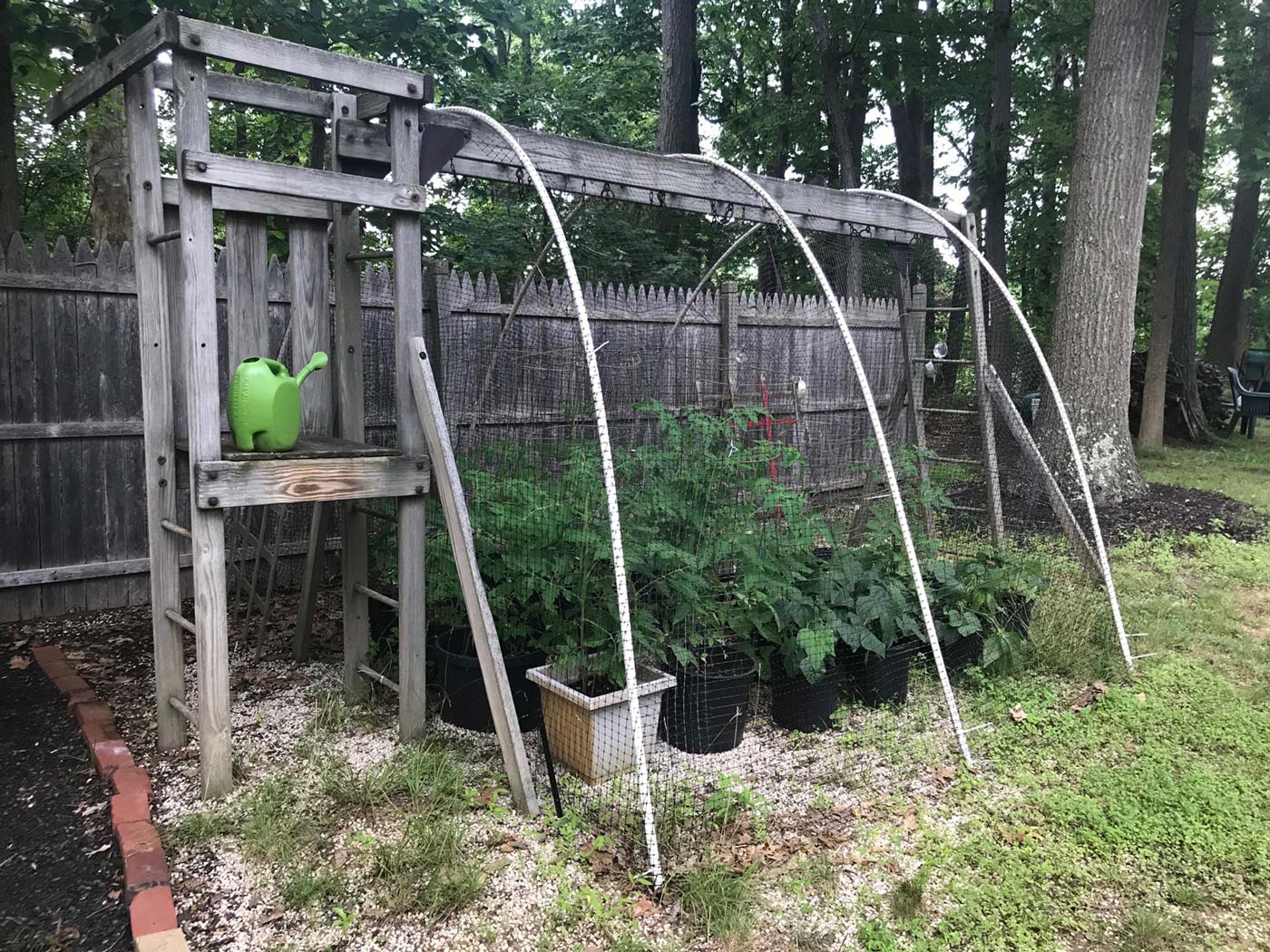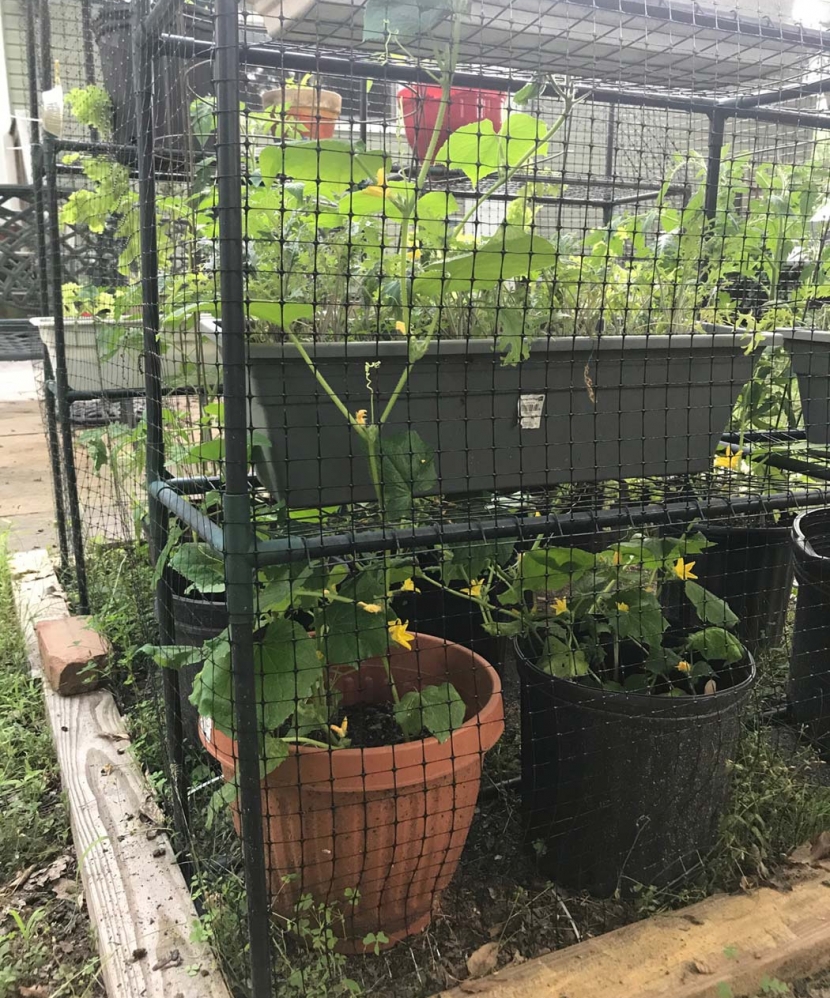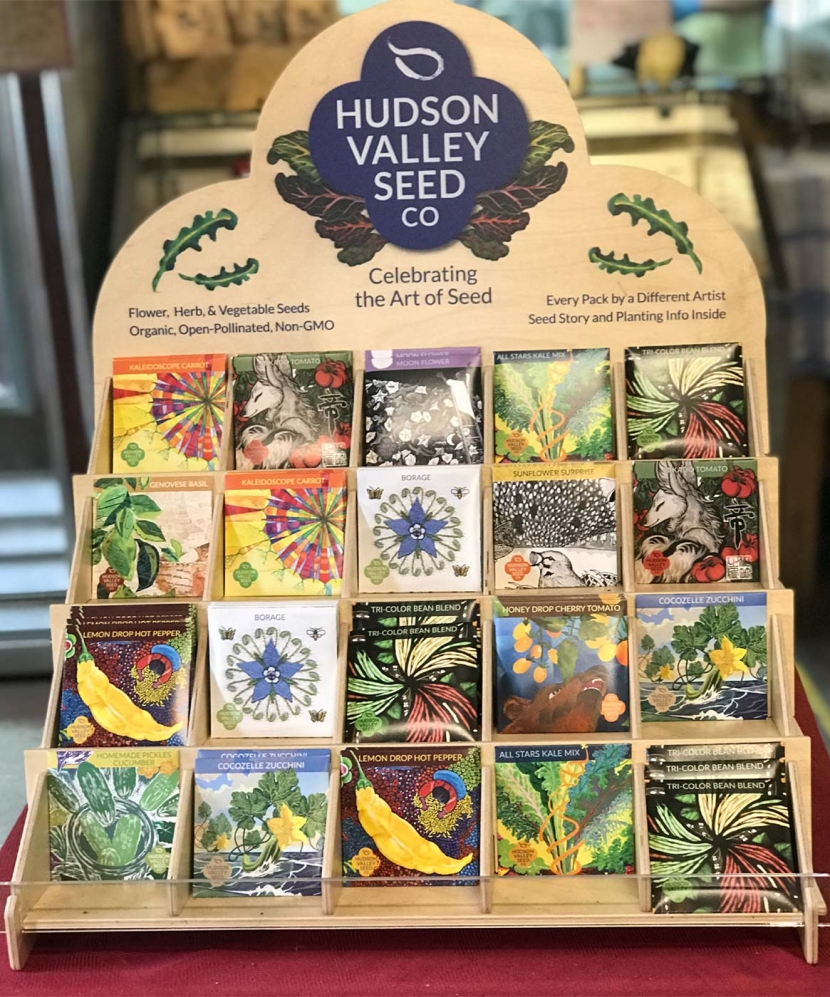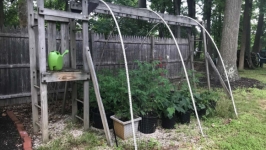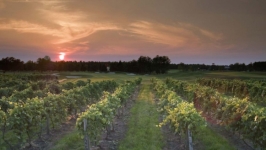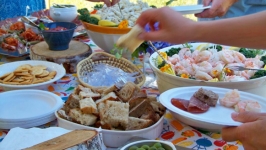COVID Victory Garden
Editor’s Note: The COVID-19 crisis has hit us all; we have been heartbroken, uplifted, unmoored. To help document the moment, Edible Jersey is sharing stories from our community.
A garden now grows where my children once played. Under a partially dismantled playset, wrapped safely in plastic deer fencing, lies a respectable “crop” of green beans and flowering tomato plants.
A few feet away in a portable greenhouse, dense rows of baby kale sit atop pepper and cucumber plants in recycled nursery stock containers. Lettuce grows safely behind the bars of an old metal dog crate, protected from hungry critters. Basil, parsley and mint grow carefree in ceramic planters on the back porch.
I had no intention of building a COVID Victory Garden in the early days of lockdown. The first war gardens, as they were initially called, were supposedly planted in March 1917, a month before the United States entered World War I. President Woodrow Wilson asked Americans to plant vegetable gardens to prevent food shortages and that request was made again during World War II. In 1944, Victory Gardens were responsible for 40 percent of the nation’s fresh produce.
There has been no presidential plea for food security, however, in the time of coronavirus. My makeshift garden was born instead from nervous energy, the desire to escape from virtual workstations and a barrage of media coverage about a fast-spreading global disease. My need to seed was more about empowerment than self-reliance…and, of course, a steady supply of salad greens and fresh mint for my iced tea.
But one question loomed large: how could we make this year a success when every garden we had planted in the past had been overrun by deer?
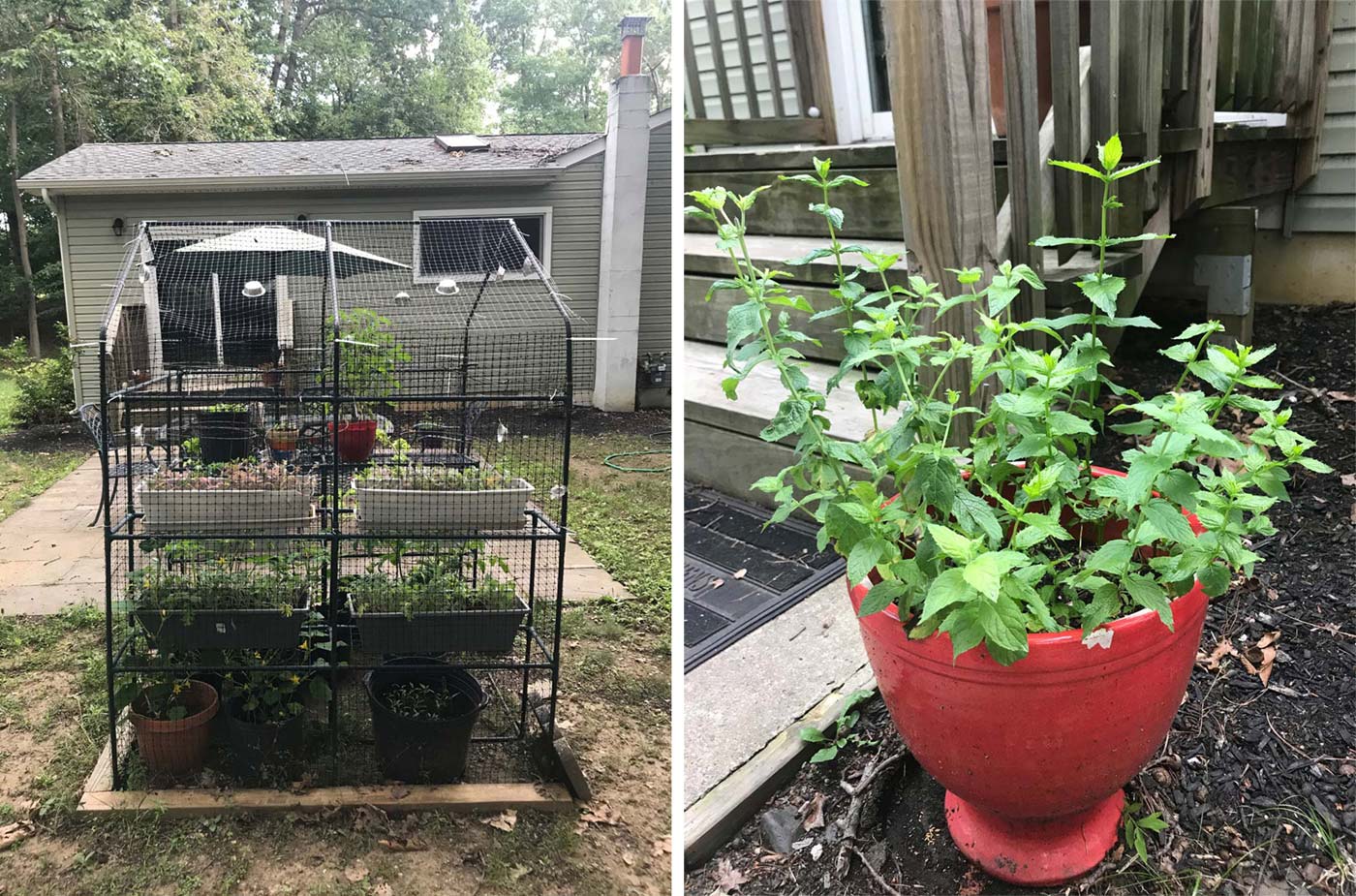
Every winter for countless years, I would buy an excessive number of seed packets while visions of a grand garden danced in my head. Come late February, potting trays would begin to occupy every sunlit space in our common rooms as the house morphed into a biosphere. The cats unfailingly would knock over a few trays irresponsibly placed on a piano bench or on a flimsy snack table. Some sprouts would wither away because I’d forget to water them. Many of the seedlings that did make it outdoors ultimately became part of my so-called free buffet for the menagerie of deer, rabbits, raccoons and other wildlife that share our two-acre lot.
Last winter, however, as the surreal talk of a quarantine became real, the seedlings were an ever-present reminder of life beyond my back door. I didn’t forget to water them this year, and, thus, they grew. Everywhere. By mid-April, every unfurnished inch of flooring in our family room was covered with seedlings.
That’s when my husband, John, had a brilliant idea.
John headed outside to rethink existing structures that could protect the plants from our four-legged foes. He quickly realized, like Shel Silverstein’s Giving Tree, our forlorn wooden playset still had something useful to offer. My husband removed the two swings and a rocking horse from rusty chains and punched up the heavy plastic slide with a sledgehammer until it broke loose from the frame.
He finally found a use for the three, 15-foot-long PVC pipes left in the barn by the previous owners (18 years ago!), bought six metal spikes from Home Depot and draped the ¾-inch pipes over the top of this sturdy frame. He covered these white arches with plastic deer fencing and secured the edges with inexpensive clamps. I finished off the structure by fastening mini-tin pie plates to the fencing in honor of my Sicilian grandfather, who hung larger versions on his garden fences because he thought they scared away pests.
“There’s a reward in looking back and seeing the garden you created.”
William Errickson, an agricultural agent for the Rutgers Cooperative Extension of Monmouth County, says county offices all across New Jersey have experienced an uptick in interest from home gardeners. In response, Rutgers developed new educational programs for first-time gardeners and those who want to improve their horticultural skills.
Errickson recommends newcomers start out with a site analysis to determine the quality of their soil. He asks them to consider how much time and money they really want to spend to build a garden. And how much time and energy can they really spare to maintain it over the growing season. Are they prepared to build a secure garden with raised beds and proper fencing? Or would they prefer to stick to a few patio tomatoes on the back porch and a small herb garden on the kitchen windowsill?
For those ready to make the commitment, Errickson says late summer is still a good time to plant green beans, beets, carrots, cucumbers and zucchini. You can buy tomato plants that are starting to flower, but it’s too late to start from seeds.
Early spring is the best time to consider lettuce, radish, peas and kale. But a new patch of lettuce and kale seeds can be replanted in late summer for a fall harvest, although there is the risk of an early frost.
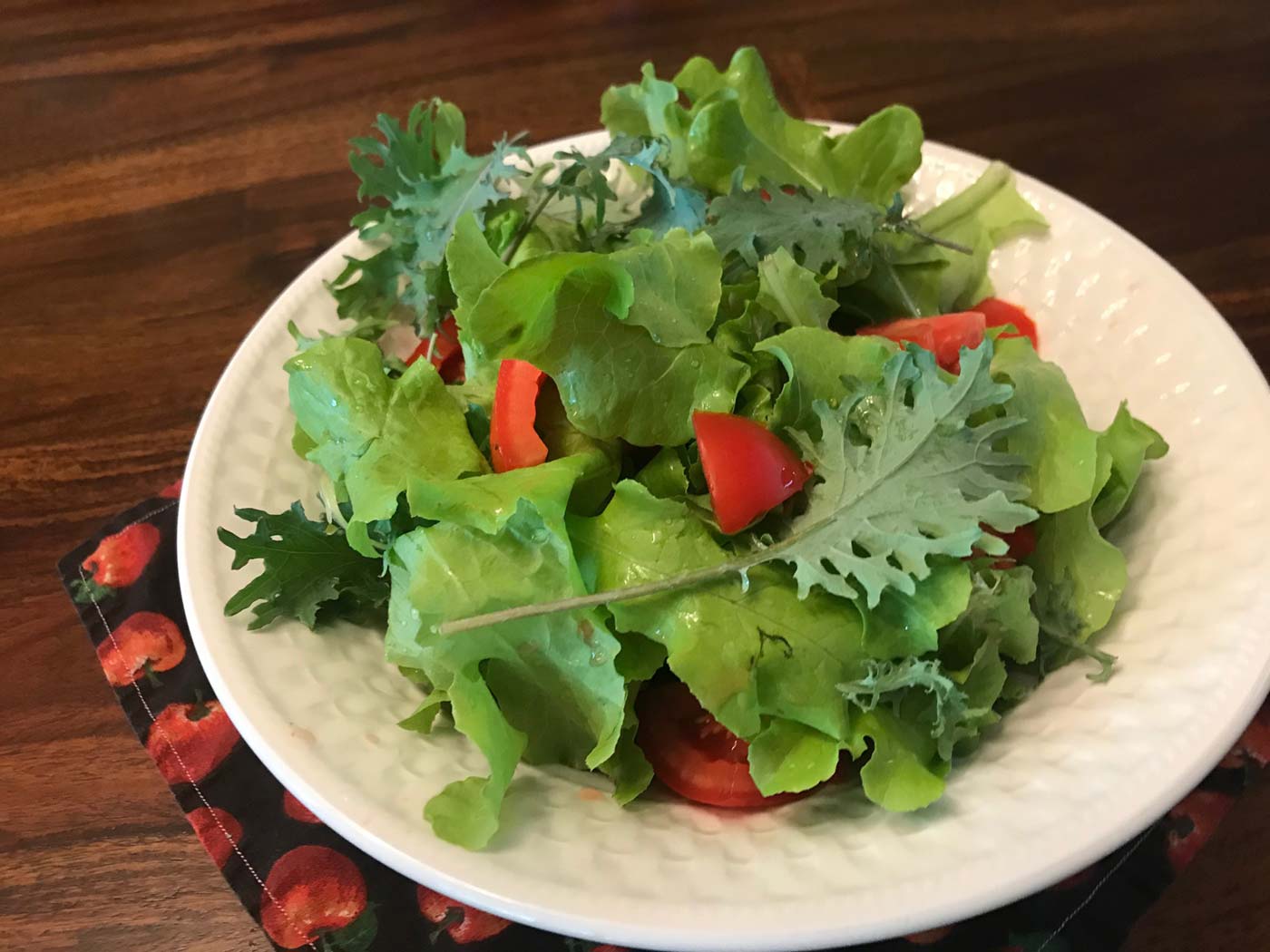
If you’re in it for the long haul, you can think about fruit. Strawberries, along with raspberry, blackberry and blueberry bushes, are not as challenging as fruit trees, but they do take a few years to produce a decent harvest.
Errikcson says New Jersey’s nurseries and garden centers were well stocked this spring and sold well. “They are a great resource for home gardeners,” he adds.
Alex Stein and his wife, Jenna Krug, opened Good Earth Nursery in Cream Ridge (Upper Freehold) six years ago. Stein says there has definitely been more demand from customers who typically don’t get their hands dirty. They came for cucumber and tomato plants, armed with questions about soil mix, organic pest control and ongoing maintenance.
So, why are so many Garden State residents tilling the soil for the first time?
“I think it’s in part about food security,” notes Errickson. “People want to take responsibility for their own food production if they feel any vulnerability in the system.”
Supporting local farmers is also taking on a new importance in New Jersey during the pandemic. But when you can do a piece of that farming yourself, it provides intellectual stimulation, physical exercise, an ability to spend more time in nature, and the satisfaction of growing your own food. It’s also a great skill to teach children.
“The idea of creating a garden is exciting,” he says. “There’s a reward in looking back and seeing the garden you created.”
Stein recalls that in late March, when grocery stores shelves went fallow, he thought the scarcity issue could go either way. Were the seeds of self-reliance planted in our minds before they were plunged in the earth?
“People weren’t growing for a main food supply,” he says. “They figured they were home, there’s not much to do, we should do this anyway, and now is a good time to start.”
Thankfully, Americans haven’t experienced food rations or been called to help grow our nation’s fresh produce supply as they did during the Great War, when President Wilson declared, “Food will win the war.”
Coronavirus is the “enemy” now, and maybe there is a desire to be better prepared to sustain ourselves in case, God forbid, it comes down to that someday. For now, as I look over my thriving vegetables, I’m just grateful for a successful growing season.
GET GARDENING
Rutgers Cooperative Extension and the New Jersey Agricultural Experiment Station is a wealth of information on home gardening and landscaping. Here are a few of their resources:
- Home, Lawn, and Garden: General information and events https://njaes.rutgers.edu/home-lawn-garden/
- “RU Ready 2 Garden” Webinar Series: Educational programming for beginner gardeners and enthusiasts
- Master Gardener Program: Volunteer program to deliver horticulture programs and information to the general public. Website also includes information on become a Master Gardener.
SEEDS WE LOVE
Seed company websites are a source of inspiration as well as information. Many long-term gardeners traditionally spend the winter months combing through seed catalogues and websites as they plan their garden. Here are a few good places to start:


